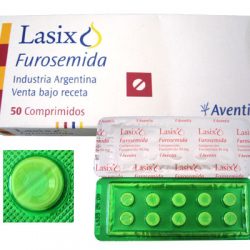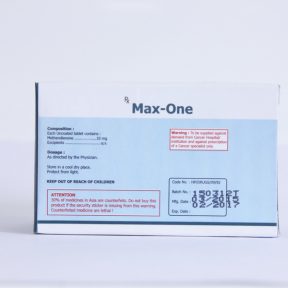Pharmachologic effect
Lasix is a strong and quick-acting diuretic, which is a derivative of sulfonamide. Lasix blocks the transport system of ions Na +, K +, Cl- in the thick segment of the ascending knee of the Henle loop, and therefore, its diuretic effect depends on the drug’s delivery to the lumen of the renal tubules (due to the mechanism of anion transport). The diuretic effect of Lasix is associated with the inhibition of the reabsorption of sodium chloride in this section of the Henle loop. Secondary effects on the increase in sodium excretion are: an increase in the amount of urine released (due to osmotically bound water) and an increase in potassium secretion in the distal part of the renal tubule. At the same time, the excretion of calcium and magnesium ions increases. When the tubular secretion of furosemide decreases or when the drug binds to the albumin located in the lumen of the tubules (for example, in a nephrotic syndrome), the effect of furosemide decreases.
At the course of taking Lasix, his diuretic activity does not decrease, since the drug interrupts the tubular-glomerular feedback in Macula densa (tubular structure closely connected with the juxtaglomerular complex). Lasix causes dose-dependent stimulation of the renin-angiotensin-aldosterone system.
With heart failure, Lasix quickly reduces preload (by expanding the veins), reduces pulmonary artery pressure and the filling pressure of the left ventricle. This rapidly developing effect appears to be mediated through the effects of prostaglandins and therefore the condition for its development is the absence of disturbances in the synthesis of prostaglandins, in addition to which this effect also requires sufficient preservation of kidney function.
The drug has an antihypertensive effect, which is caused by increased sodium excretion, a decrease in the volume of circulating blood and a decrease in the response of the smooth muscles of the vessels to vasoconstrictive stimuli (due to the natriuretic effect, furosemide reduces the response of the vessels to catecholamines, whose concentration in patients with arterial hypertension is increased).
Gegenanzeigen
-
Nierenversagen, Anurie;
-
Leberkoma, precoma;
-
schwere Hypokaliämie;
-
schwere Hyponatriämie;
-
Hypovolämie (begleitet von arterieller Hypotension oder ohne);
-
Austrocknung;
-
Schwangerschaft;
-
Laktation (Brust vkarmlivaniya);
-
Überempfindlichkeits zu Produktkomponenten und anderen Derivaten der Sulfonamide (Antibiotika oder Sulfonylharnstoff-Produkt).







